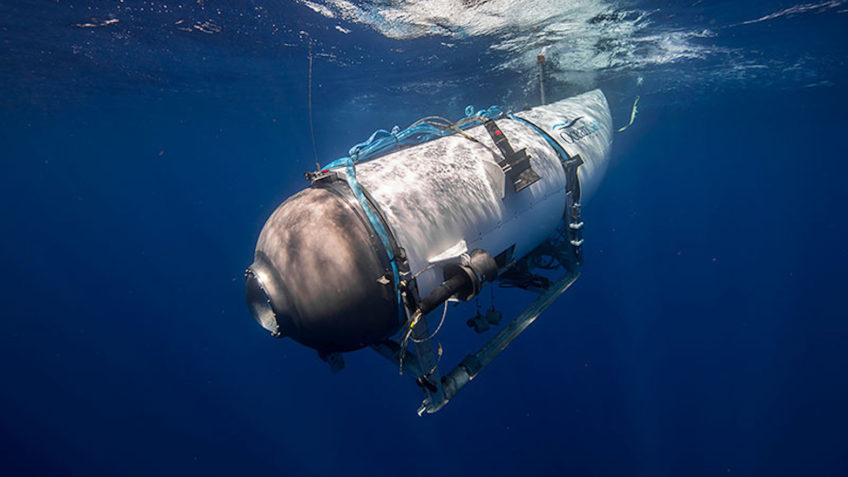
By adding variables to a complex system, the range of possible outcomes increases exponentially, writes Paula Schmitt
On June 18, 2023, the submersible Titan imploded on the seabed en route to the Titanic, killing all 5 passengers. Newspapers around the world speculate that the main cause of the accident was the fragility of the vessel’s hull.
In an interview to CNN, the filmmaker and explorer James Cameron tells that he already suspected the safety of the hull, made with more than 1 material. What interests me most in his speech, however, is not the composition of the hull, but the mention of computational modeling used to simulate situations and predict results.
“If you are using a uniform material, like steel or titanium or ceramic or acrylic, you can do computer modeling with a high degree of accuracy and confidence,” he said. It is when materials are mixed that the results become much less predictable.
There is a question that I am asked quite often: how was it possible that I, notoriously ignorant of science and deficient in mathematics, had already decided in 2020 that I would not take the “vaccine” covid?
My answer has to do with Cameron’s explanation and should be something obvious to anyone who is minimally thinking but, above all, aware of his ignorance: when you add variables to a complex system, the variations of possible results increase exponentially. And so it was with “vaccine” of mRNA. And so it is with the introduction of genetically modified mosquitoes into a nature that took millennia for all its elements to adjust.
In a podcast by journalist David Agape in which I participated with biogeneticist Eli Vieira, I explained in December 2020 why I was already sure that I would not take the “vaccine” of mRNA. It wasn’t just because it forced the human body to create its own pathogen that it would have to fight.
The question is much simpler: the “vaccine” of mRNA added a new step to the process, and the addition of a new step is not like an extra step on a linear, straight-forward ladder: it is like a new road at a crossroads. This metaphorical road and all the streets that start from point A are only close at the origin, but at the destination they are thousands of kilometers from each other.
Incredibly, who explained this unpredictability very well was Natalia Pasternak. At anti science joke that we have experienced in recent years, Natalia Pasternak was omnipresent:
- here is Natalia at SBT;
- here is Natalia in the newspaper The globe;
- here is Natalia at TV Culture;
- here is Natalia at CNN Brazil;
- here is Natalia at g1;
- here is Natalia at UOL;
- here is Natalia at Sheet;
- here is Natalia at Estadão;
- here is Natalia at Bandeirantes radio;
- here is Natalia at CBN radio.
Few times in the history of journalism has a source been shared so often. I myself have spoken about Natalia a few times, but not in praise, and never as a scientific reference. Today, however, I want to pay tribute to this woman, because at least one point in the pandemic she spoke the truth about the mRNA vaccine.
The explanation was made in a program by journalist Vera Magalhães released 2 years ago on YouTube – it still has only 5,600 views. But the excerpt extracted from the program that posted on my profile on Twitter it was viewed 199,000 times in 5 days. Each is worth its 103 seconds, because there, in that lapse, Natalia describes how the mRNA vaccine works with disconcerting honesty:
“Then we have the genetic vaccines that you will work with just the information. I’m going to take the information contained in a DNA or RNA molecule, which has the information to make the virus protein, and I’m going to throw it inside our cells and tell the cells ‘do it, make the protein’. The cell will read that information, make the virus protein, and present it to the immune system. The immune system, which as you already know is kind of dumb, will look and say ‘Hi, the virus is here,’ right? Is not. It was only our own cell that fooled the immune system. She [nossa célula] produced the virus protein […]. The 3rd generation vaccines, what is their biggest advantage? They are versatile as hell. I’m working both on the vector and on genetic vaccines with genetic sequences, with information. I change these genetic sequences like someone changing clothes. So if I have the platform ready, with the genetic vaccine ready, today it is ready for SarsCov2. Tomorrow she’s ready for another coronavirus, because I just need to change this DNA or RNA sequence. So these vaccines are really cool because they’re easy to produce, they’re quick to produce and they’re very versatile. What is their only problem? We never did before. [risos].”
Source: https://www.poder360.com.br/opiniao/o-submergivel-que-nao-emerge-e-a-vacina-que-boia/

